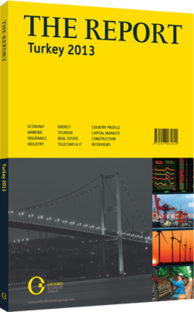OBG talks to Zafer Çağlayan, Minister of Economy

Interview: Zafer Çağlayan
What prompted the government to establish a new foreign investment incentive framework, and how quickly do you expect this to begin delivering results?
ZAFER ÇAĞLAYAN: The 2012 investment programme, which renewed and enhanced many of the incentives that were set forth in 2009, was established for three reasons.
First, the programme will support our national development strategy, which foresees Turkey becoming one of the world’s 10 largest economies by the year 2023. This will not be achieved without financial and technical support from foreign investors and companies, which is why we have taken steps to make the domestic business environment as attractive as possible.
Second, the new system was implemented to update the regional incentive framework. The previous structure was criticised for not sufficiently adapting incentives according to the socioeconomic needs of each region. The new system addresses this problem by creating six distinct quadrants, and by enhancing investment incentives in underdeveloped regions that face challenges such as high unemployment.
In particular, our new arrangement has aggressively positioned the sixth region as a destination for investment, and as a centre for labour-intensive industries such as agribusiness and textiles. Incentives offered in this part of the country now include income tax withholding and insurance premium support. In addition, for the next 10 years the government will subsidise labour costs in the sixth region by paying employers $240 out of every $630 they spend on each worker.
Third, the new incentive programme incorporates the feedback we received from investors over the last several years, especially relating to extending tax credit support. We have already observed significant interest in our new investment scheme. Between June 20, 2012 and February 28, 2013, there were 3335 investment applications worth some TL47bn (€20.29bn).
Of these investments, 41.9% were regional, 34.5% were general, 15.6% were strategic and 8% were large-scale projects. In terms inflows to specific industries, manufacturing garnered 53.7% of the investment total during this period, followed by services with 24.1%, energy (17.3%), mining (3.9%) and agriculture (1.1%).
What new trends have you observed regarding inflows of foreign direct investment (FDI)?
ÇAĞLAYAN: The slowdown in advanced economies has compelled investors to target emerging markets. According to data published in the “Global Investment Trends Monitor – January 2013” by the United Nations Conference on Trade and Development, global FDI inflows decreased by 18% in 2012, reaching $1.3trn due mainly to macroeconomic fragility and policy uncertainty for investors. In 2012 Turkey was affected by this decrease, with FDI flows reaching $12.4bn.
However, Turkey, with its political stability, strategic location, young population and highly skilled labour force, has become a safe haven. Although total FDI inflows to Turkey prior to 2003 were just $15bn, between 2003 and 2013 they reached $124bn, increasing eightfold compared to the period before 2003. Furthermore, FDI inflows in 2013 are expected to reach even greater levels compared to 2012. Moving forward, we are keen to encourage is an increase in FDI that brings value-added and advanced technology into our industries, and that supports our Input Supply Strategy, which aims to reduce the dependence of local exporters on imports of intermediate goods to create their finished products.
How much progress have Turkish businesses made recently in expanding into international markets?
ÇAĞLAYAN: Over the past decade, Turkish firms have become far more active in major foreign markets such as the UK, Germany, China, India and the US. Indeed, according to one independent study, Turkey ranks 19th globally in country branding, with a brand value of $487bn. Sectors that have been particularly successful in increasing their international brand value include telecommunications, transportation, finance, energy, food and retail, consumer goods and construction.
You have reached the limit of premium articles you can view for free.
Choose from the options below to purchase print or digital editions of our Reports. You can also purchase a website subscription giving you unlimited access to all of our Reports online for 12 months.
If you have already purchased this Report or have a website subscription, please login to continue.

